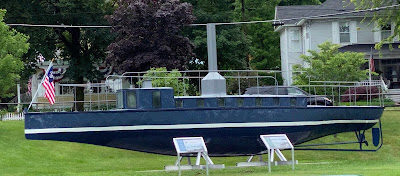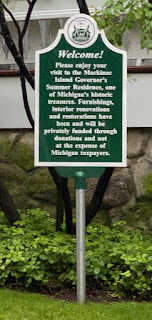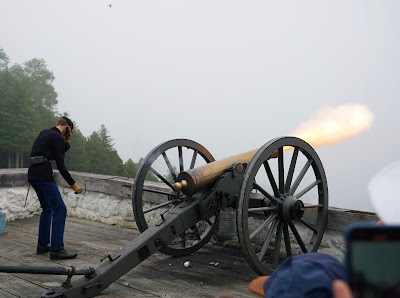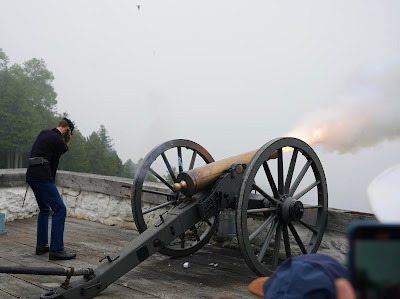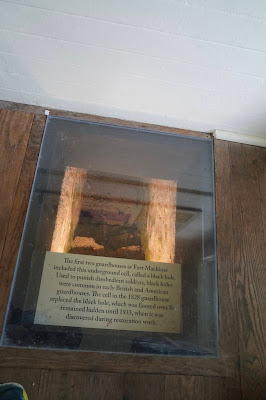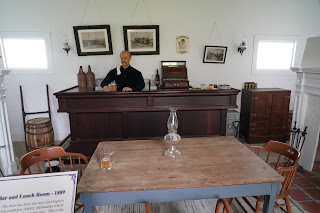Get-there-itis is when you let the determination to reach your destination overrule your judgment, aeronautical decision making, and just plain common sense. It can end in disaster.
Most people stop before even one crash. Dennis "Crash" Collier didn't stop after 6 crashes and ended his rush to get home from California to Michigan with a final crash destroying the airplane.
This is a cautionary tale of absolutely and inexcusably lousy aeronautical decision making.
Traverse Record-Eagle: Seawind Saga: Pilot who crashed in Lake Michigan had 7 crashes in 7 days.
Bad Decision #1: No pre-buy inspection. Guy buys an amphibian airplane for $100,000 essentially sight unseen. I'm sorry, but if you're investing that kind of coin, a thousand bucks for a thorough pre-buy would avoid a lot of grief and avoid the easily foretold end to this series of insane decisions right from the start.
Bad Decision #2: Not walking away before even the first crash
The plane hadn't been flown for two years and had only 20 hours on the engine, and the buyer/pilot could clearly see repairs were needed. This is a clear sign to stop right there. This guy? Not so much.
Bad Decision #3: Not walking away after the first crash
On his first test flight he crashes gear up after dealing with a trim problem. This is a clear sign after missing the first two clear signs that it is time to walk the hell away. Of course he didn't.
Bad Decision #4: Not walking away before the second crash
He then inexplicably gets into the plane again and takes off for a night flight when he's out of night currency in an unfamiliar and knowingly deficient airplane and heads to New Mexico. Oh, and the landing light on the aircraft is inoperative. He arrives in New Mexico and crash lands once again - at night - stalling it into the grass off the runway and taking out some runway lights. He then has another "runway incident" after recovering from this crash.
Both his village and the FAA should have been calling for him at this point.
Bad Decision #5: Not walking away before the third crash
But our overly-determined pilot pushes on. He then flies through storms which is a stupid idea all by itself, and then what sounds like the trim tab gets stuck pushing the nose in the up position, and he has to fly while pushing the stick forward constantly with his knee.
He then crash lands at an airport off a runway in Nebraska after 4 attempts to land. Well, at least Nebraska is pretty flat, so there's that.
Bad Decision #6 and #7: Not walking away before the fourth and fifth crashes
Sensing a pattern yet? Of course he doesn't stop even though he described himself as "shaking" and the manager at the Nebraska airport gives the solid advice of sending the plane home via a flatbed and his flying home commercial. You'd think he would listen, but no.
He then has another crash at the same airport in Nebraska after a test flight and then discovers some wires are crossed in the airplane which he "fixes".
But wait folks, there's more!
Bad Decision #8: Not walking away before the sixth crash.
He presses on and reaches Michigan. Where he promptly losses his hydraulics and his fuel gauge near Escanaba and yep, runs out of fuel and yes, crashes the plane once again. His number of crashes are equaling his number of takeoffs. This is not a good sign and anyone else would have run away screaming from that aircraft long before now.
But not our intrepid crash pilot. He just adds a quart of hydraulic fluid and some fuel to the airplane. He departs knowing his fuel gauges are wrong, knowing there's a good chance his fuel pump is not pumping right, and knowing that he promises the FAA he won't retract his landing gear and may not have sufficient hydraulics to do it anyways.
Bad Decision #9: Not walking away before the seventh and final crash.
So Crash Collier takes to the air again, confident that his number of crashes will equal his number of takeoffs - and he's not disappointed. But this time he's over the water.
Sure enough, his engine sputters, he smells something burning, and his flaps won't respond and his hydraulic pressure gauge reads, unsurprisingly, zero.
So he goes for a water landing. After all, this is an amphibious aircraft and can land on the water.
But, he lands on the water with the gear still down. This is not how you do a water landing.
The plane then, as is often the way with gear down water landings, noses over, goes straight in, and rapidly begins to fill with water. Luckily for Crash, it bobs back up to the surface, and then begins to sink in 300 feet of water.
He gets out and is rescued by the Coast Guard.
Bad Decision #10: Not insuring the aircraft. Not sure an insurance company would pay out after such a string of events, but he didn't even get any insurance to start with, so that's a $100,000 loss right there.
The only thing "Crash" Collier may have done right in this whole insane episode is his decision, after these 10 insane decisions that he inexplicably survived, to never pilot an aircraft again.














